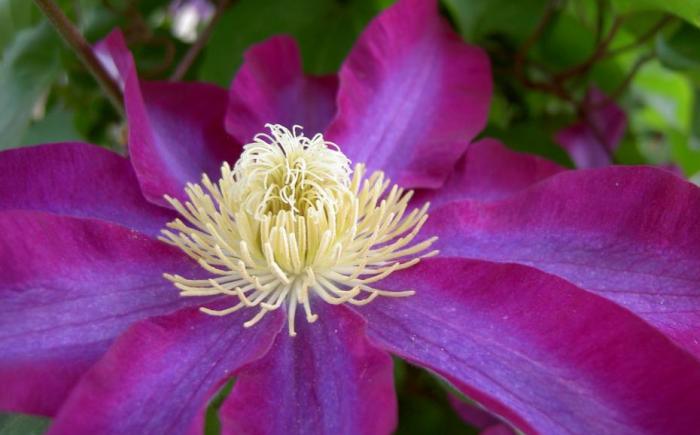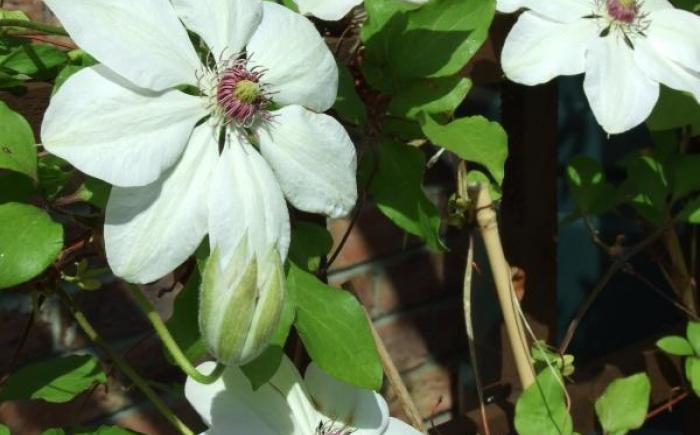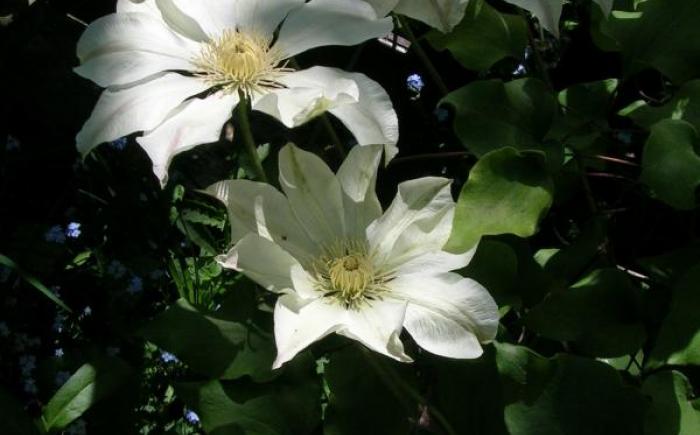
Clematis are a light weight plant and can grown on most anything that you can give them a chance to grow on such as trellises, fences, up walls, and even through trees and some shrubs. Clematis prefer cool soil temperatures so planting them near a shrub or tree with a not so aggressive root structure will add shade to the roots and help your clematis grow well.
Clematis can sometimes take a couple seasons to really get growing. A good phrase to remember and describe the early years of it’s life-cycle is “The first year it sleeps, the second year it creeps, and the third year it leaps.” So before you become discouraged that your clematis hasn't taken, be patient and before you know it you'll have a beautifully lush addition to your garden!
How To Prune Clematis
Clematis can be a confusing group of plants to prune, since they are not all pruned the same way. There are three methods that can be applied to major groups depending on the time of year the plant flowers. The earliest flowering clematis bloom on old wood, while later flowering types must produce new growth in order for flower buds to form. Prune carefully, since vines are usually well entangled.
1. Early-flowering Clematis
Plants in this group bloom in early spring, generally in April and May, from buds produced the previous season. Prune these plants immediately after flowering, but no later than the end of July. This allows time for new growth to produce flower buds for the next season. Remove shoots that have bloomed. You can prune out more vines to reduce the size or to form a good framework of branches, but avoid cutting into woody trunks. Plants in this group include: Alpina, Macropetala, Armandii, Montana and Chrysocoma.
2. Large-flowered Hybrids
Large-flowered hybrids bloom in mid-June on short stems from the previous season's growth and often again in late summer on new growth, though these blooms are usually smaller. Prune in February or March by removing dead and weak stems, then cut back the remaining stems to the topmost pair of large, plump green buds. This cut could be a 6 inches to 18 inches from the stem tips. Plants in this group have the tendency to become leafless at the base as they mature. You can underplant with low, spreading perennials to help conceal the stems. You may be able to force a flush of new growth from the base by cutting the vine back to 18 inches immediately after the flush of bloom in June. Plants in this group include: Nelly Moser, Miss Bateman, Lasurstern, Duchess of Edinburgh, Mrs. Cholmondeley and others.
3. Late-flowering Clematis
Plants in this group flower on the last 24-36 inches of the current season's growth. Some types begin blooming in mid-June and continue into the fall. This is the easiest group to prune since no old wood needs to be maintained. In February or March cut each stem to a height of about 24-36 inches. This will include removal of some good stems and buds. Eventually the length of the bare stem at the base will increase as the vine matures. Plants in this group include: Viticella, Flammula, Tangutica, Jackmanii, Maximowicziana, Perle d'Azur, Royal Velours, Duchess of Albany and others.












